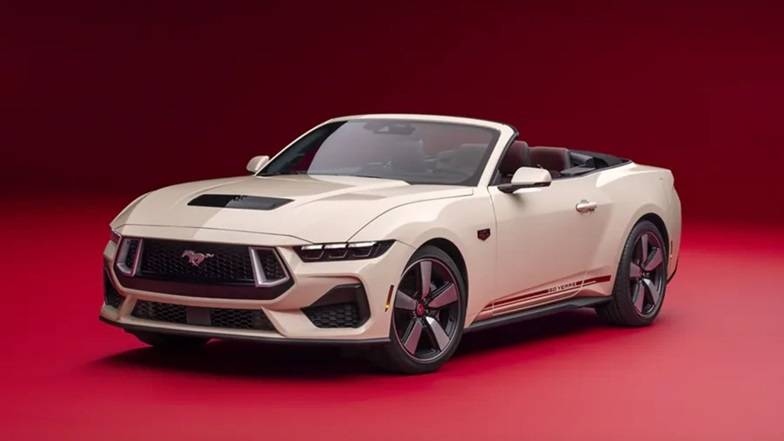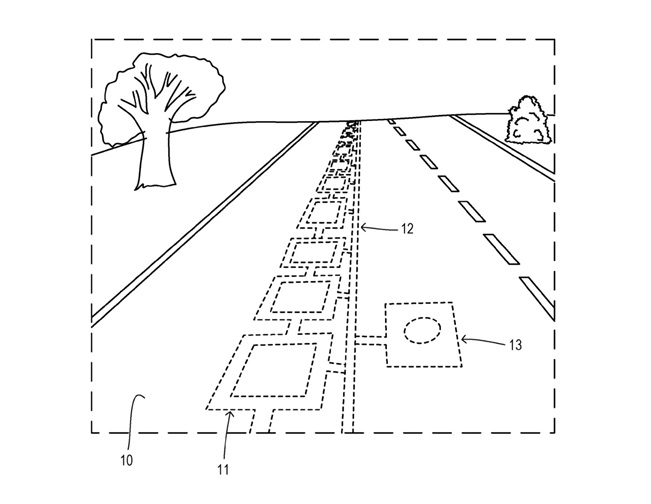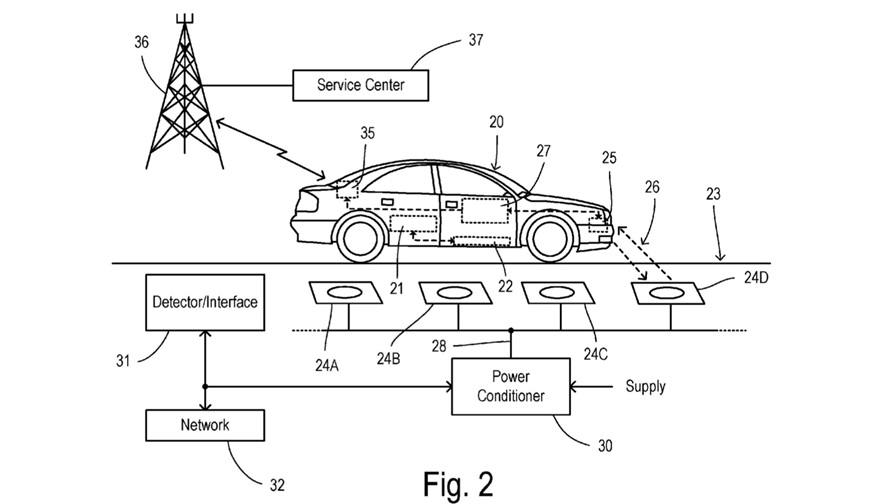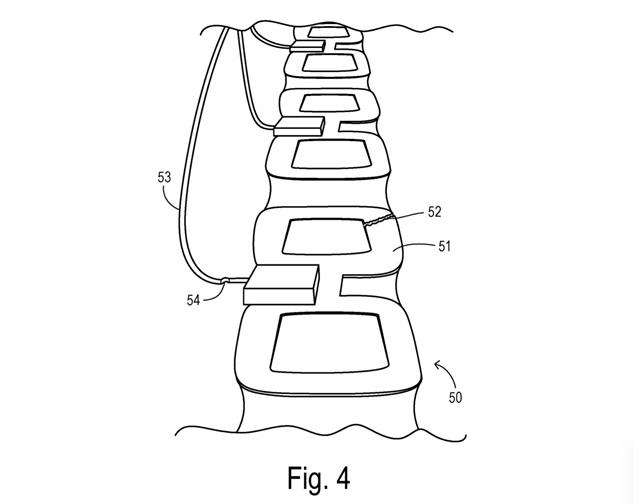Ford New Patent- Imagine cruising down the highway in your electric vehicle (EV) while it charges effortlessly
Imagine cruising down the highway in your electric vehicle (EV) while it charges effortlessly, without ever having to stop. Ford is working to make that a reality. The company has recently filed a new patent aimed at allowing EVs to charge while driving, and it’s packed with innovations that could revolutionize how we power our cars.

Key Highlights:
- Charging on the Move: Ford’s patent is designed to enable EVs to charge wirelessly as they drive, using inductive charging coils embedded in the road.
- Precise Alignment: One major challenge with wireless charging is making sure the vehicle stays perfectly aligned with the coils in the road. Ford’s solution? Ground-penetrating radar to track and align the vehicle with these coils.
- Efficiency & Safety: The radar won’t just track the coils. It can also check their condition, alerting drivers if a lane is not functioning properly and even notifying maintenance crews for repairs.
- Vehicle-to-Vehicle Communication: Ford envisions cars communicating with one another, negotiating which lanes to use based on their current battery levels.
- Automation Options: Drivers could manually steer their EVs with guidance from displays, but Ford also suggests semi-automated and hands-free driving systems, like their BlueCruise, taking over to keep the car aligned with the charging lanes.
This new patent shows Ford is thinking ahead, potentially giving EVs the same wireless freedom that smartphones have enjoyed for years.

Important Points:
| Key Innovation | Description |
|---|---|
| Wireless Charging on Roads | EVs could charge while driving over coils embedded in roads. |
| Ground-Penetrating Radar | Radar helps the car align precisely with road coils and assess their condition for proper charging. |
| Vehicle Communication | EVs could communicate with each other to negotiate lane usage based on battery levels, ensuring optimal efficiency. |
| Automation Capabilities | Different driving modes from manual steering with guidance to fully automated systems like BlueCruise could help cars stay aligned with the coils without driver intervention. |
Comparison
| Traditional EV Charging | Ford’s Wireless On-the-Move Charging |
|---|---|
| Requires stopping at charging stations | Allows charging while driving without stopping |
| Uses connectors, cables, and charge ports | Wireless charging through coils embedded in roads |
| Relies on driver for positioning at charging stations | Ground-penetrating radar and automation keep vehicle aligned |
| No communication between vehicles regarding charging | Vehicles could communicate to optimize lane usage for charging |
How Ford’s Wireless On-the-Move Charging Compares to Traditional EV Charging
Ford’s innovative wireless charging system offers several key advantages over traditional EV charging methods. Here’s a breakdown of how the two stack up:
| Feature | Traditional EV Charging | Ford’s Wireless On-the-Move Charging |
|---|---|---|
| Charging Process | Requires stopping at a dedicated charging station | Charges EVs while driving over embedded road coils |
| Equipment | Uses charge ports, connectors, and cables | Wireless, no cables needed—electricity transferred via inductive coils |
| Charging Time | Time-consuming—can take from 30 minutes to several hours | Continuous charging while on the move, no waiting or stopping |
| Driver Involvement | Requires manual alignment with charging equipment | Ground-penetrating radar and automation align vehicle with coils |
| Efficiency | Dependent on station availability and charging speeds | Potentially more efficient, as cars can charge while in motion |
| Vehicle Communication | No communication between vehicles | Cars could communicate to optimize lane usage and prioritize charging based on battery levels |
| Maintenance | Chargers can be unavailable or broken, often unreported | Radar could detect faulty coils and report them for repairs |
| Convenience | Stops are required for charging, adding time to trips | Continuous, hassle-free charging without needing to stop |

Key Advantages of Ford’s System:
- Time-Saving: No need to stop at charging stations—EVs can charge while on the go, eliminating downtime.
- Automation: With features like ground-penetrating radar and hands-free driving (via systems like BlueCruise), Ford’s system reduces driver effort.
- Vehicle Communication: EVs could “talk” to each other to optimize road and lane use, avoiding congestion and maximizing charging efficiency.
Challenges:
While Ford’s on-the-move charging concept offers promising solutions, it does face challenges. Large-scale infrastructure development—embedding coils in roads and ensuring proper power sources—would require significant investment and coordination. Additionally, the system’s full potential relies on widespread adoption, which may take time.
Future Potential:
If Ford’s system is successfully implemented, it could revolutionize EV travel, making charging as seamless as driving, much like wireless connectivity has transformed smartphones.
When is this available?
Ford’s wireless on-the-move charging system is still in the development and patent stage, meaning there is no official timeline for when it will be available to the public. The patent was filed earlier this year and published by the United States Patent and Trademark Office (USPTO) in August 2023. However, this doesn’t guarantee that the technology will be implemented soon, as it must undergo further development, testing, and infrastructure planning before it becomes a reality.
Given the complexity of the system, including the need to install inductive charging coils in roads and ensure EV compatibility, it could take several years before Ford’s wireless charging solution becomes available—if it’s rolled out at all. The broader adoption of this technology would also depend on collaboration with governments and infrastructure developers to build roads equipped with charging coils.
In summary, while Ford’s system has great potential, we are likely several years away from seeing it in action, and its availability will depend on how quickly the necessary infrastructure can be developed.

How much will it cost?
At this stage, it’s difficult to estimate how much Ford’s wireless on-the-move charging system will cost, as it is still in the patent and development phase. Several factors will impact the overall cost:
Factors Affecting the Cost:
Infrastructure Investment:
- Embedding inductive charging coils in roads will require significant infrastructure upgrades. Costs will depend on the scale of implementation, the length of roads equipped, and the technology used to connect the coils to power grids.
- Governments, municipalities, or private companies would need to fund the installation and maintenance of these systems, which could influence tax or toll policies for EV drivers.
Vehicle Compatibility:
- New hardware will be needed in vehicles to allow them to align with and use the wireless charging coils. This could increase the price of EVs that are equipped with the technology, though costs may decrease over time with mass adoption.
- Retrofitting existing EVs may also be an option, but it could come with additional costs for consumers.
Electricity Costs:
- Charging while driving will still require electricity, so pricing could depend on how this energy is billed—either directly to consumers through special road usage fees or incorporated into regular utility costs.
- Governments or private companies could introduce pricing models similar to tolls or pay-per-use charges to cover the cost of the charging infrastructure.
Maintenance and Upkeep:
- Ongoing maintenance will be required for road-embedded coils and the supporting systems, which could incur additional costs for municipalities and potentially drivers.
Potential Consumer Costs:
- Higher EV prices: EVs equipped with this technology might be more expensive initially, much like current electric cars with advanced features like autonomous driving.
- Charging Fees: Depending on how the system is set up, there could be usage fees similar to how current charging stations or toll roads work, meaning consumers might pay per charge or per mile driven while using the technology.
- Public Funding: Governments could choose to subsidize infrastructure costs, reducing the direct financial burden on consumers.
Since this system is still in the early stages, it’s too soon to know exact pricing, but costs will likely involve both vehicle upgrades and infrastructure investments. For consumers, this could mean higher upfront costs for vehicles and potential fees for using the charging roads, though prices could decrease as the technology becomes more widespread.
This technology could pave the way for a future where EVs are as easy to charge as smartphones, with the added convenience of never having to stop for fuel again. Ford’s vision may just be the key to eliminating range anxiety once and for all!
Related Post
- Volvo’s Electric Revolution: 5 New EVs, Cutting-Edge Tech, and AI Advancements by 2030
- Tesla to unveil Cybercab Robotaxi on October 10 at Warner Bros. studios
- 2025 Toyota Celica GR Sport New Upgrades: Specs, Performance, and Pricing
- The Real Story Behind EV Sales: What’s Happening in 2024?

